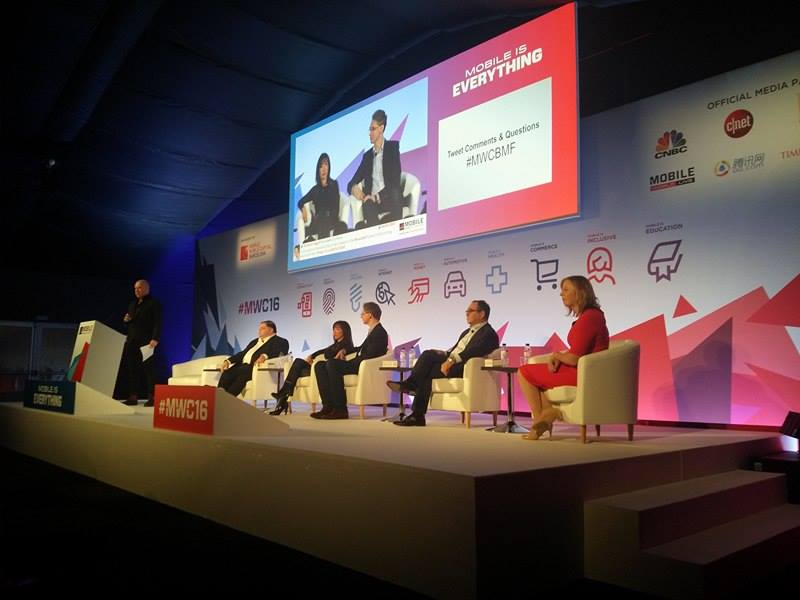On the morning of the first day of Mobile World Congress 2016 in Barcelona, a panel of experts discussed the opportunities and challenges of putting mobility first.
Google branding and consumer markets managing director David Black opened with a dynamic video presentation, posing the question “Who remembers when the internet used to make a noise?”
“It would sing to you a harmonious song of connecting,” Black added. “That wasn’t that long ago. But these days we don’t go online, we live our lives online.”
He went on to discuss how mobile video is better than ever before, with bigger, brighter and clearer screens, as well as sharper cameras and crisper sound.
“Mobile has changed the way we create and consume video,” he continued, referring to how the compromise from watching TV communally with family as a child has been eliminated by mobile video, with users able to take charge of an incredible diversity of content.
“The stars of today are YouTube stars,” he added, “for millennials, these YouTubers are mainstream.”
With digital video becoming more immersive and an active participatory experience, the principles of brand marketing for mobile are the same but choice and engagement gives marketers new ways to reach consumers.
According to Black, the three things to do are “show up” and be where the consumers are, whilst understanding how consumer behaviour is changing, “wise up, test, learn and optimise for mobile” and “be greater with data”.
“If you think today’s world is immersive,” he added, “we’re just getting started!”
“There’s never been a better time to be a brand marketer,” he added. “Show up, wise up and speed up and you’ll make the most of the video revolution.”
Engaging consumers
Syniverse chief marketing officer Mary Clark and MediaLink chairman and chief executive Michael Kassan then discussed how important mobile is in engaging consumers.
“It’s all about personalisation,” said Clark, discussing a recent survey that demonstrated that consumers are concerned about sharing information.
She went on to discuss that when a consumer opts in, they recognise that a relationship exists, but this raises three concerns which have to be dealt with to ensure successful personalised consumer engagement – the care of data, the transparency and some ability for control.
Kassan cited successful examples of virtual reality New York Times content and L’Oreal’s augmented reality tool that allows users to try thousands of products and share socially.
Advertising and utility
Aquto chief executive and founder Susie Kim Riley and Bank of America senior vice president and enterprise media executive Louis Paskalis then joined the panel, with Paskalis discussing the building tension between advertising and utility.
“I like to say, to be a provocateur that we are at the beginning of the post advertising era,” said Paskalis. “We’re moving in to an environment where brands are going to engage with consumers and mobile.
“This is the most personal, most relevant communications device in the history of mankind and it’s a brand reappraisal device,” he continued, about his mobile. “I feel like this is the renaissance of marketing – we have so many more opportunities to create real utility.”
He went on to discuss how brands are now competing with every consumer who has become a publisher in the social era, meaning they need to become a better utility.
“We’re essentially using ad inventory as notification for content you’re interested in,” he added. “Those marketers that are riding a different set of rails are going to win really big.”
Black said that “great content is great advertising”, citing an example where four out of ten of the most shared videos were adverts.
Riley discussed the downside of using TV dollars for mobile, going on to explain how enabling users to engage with mobile content free of data charges could give data to users in exchange for engaging with a brand.
“Consumers only care if it really bothers them – if it makes them feel at risk,” said Clark, discussing how increased mobile usage might have led to a greater level of awareness in the way consumers interact with their device. She added that the way around this is to offer something that will make the consumer happy and therefore a little more trusting.
“What is good enough today might not be good enough tomorrow,” said Paskalis. Kassan said that transparency was the key to making consumers feel more comfortable, as was the importance of a value exchange clearly communicated to the consumer.
“Advertising by its nature is disruptive,” said Paskalis, going on to discuss the redefinition of ROI over a lifetime. “What we need to do as marketer is join conversation. Content is not long form advertising.
“There is loads of innovation in this space, that has to be a good thing,” concluded Black. “Video is going to get more and more immersive.”








